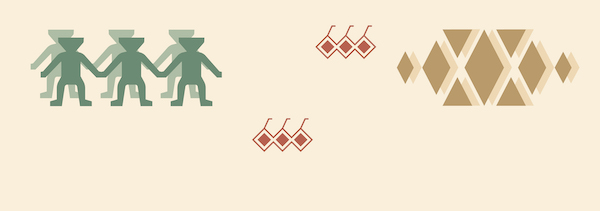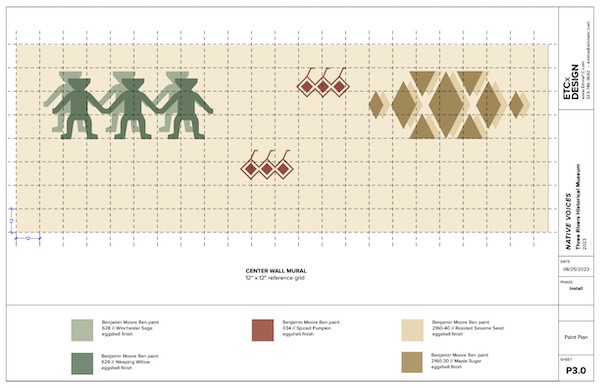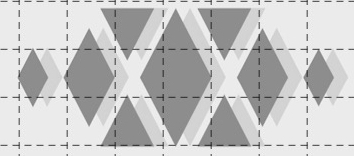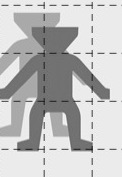Nope. Some are designs, created for museum displays, by exhibit designers. The Three Rivers History Museum hired a museum designer, an exhibit designer, whatever the title is, to create a Native American exhibit, and they (or is it the Tulare County Historical Society? Or the Mineral King Preservation Society? I should pay more attention!) to execute these designs.

Every new job I take on has an entirely new set of challenges. How does one take this little PDF and turn it into a wall design? These exhibit designers may not have completely thought through the execution phase of the display. However, maybe they do know how to do such a job and just didn’t tell the museum. Maybe it involves equipment and technology that I don’t own.
No problem. I figured it out.
The designer sent it with a ?”=1′-0″ grid over the top.

I turned it to black and white, isolated each group, and printed it. (These samples don’t show the whole designs—just wanted to give you an idea.)



Next, I got some giant kraft paper (looks like brown butcher paper on a great big roll, and if you have ever received a wrapped gift from me, you know what I’m talking about) and laid it out on my drafting table. This was quite a big jump from my normal 11×14″ pencil drawings.
And then, I started measuring and drawing.
It took an entire day.
What next? I had to figure out how to get the patterns on the wall. I’ll show you next week, after our monthly Learned List.